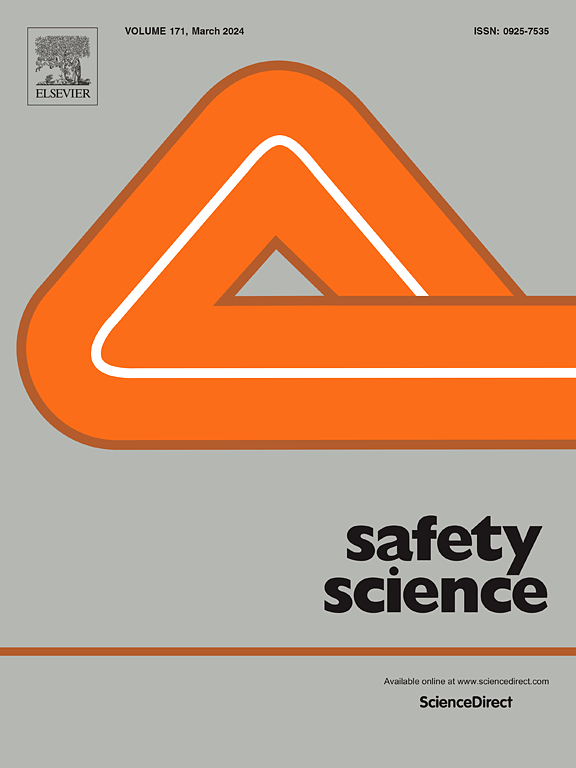Quantifying dire evacuations in case of wildfire using trigger boundaries and case study of the 2018 Mati wildfire in Greece
IF 4.7
1区 工程技术
Q1 ENGINEERING, INDUSTRIAL
引用次数: 0
Abstract
Wildfire evacuation is a life-saving measure of last resort, but delays can lead to dire outcomes, putting people at risk of fire entrapment. The success or failure of an evacuation depends on the relative speeds of the wildfire and the evacuation, and this varies across communities and wildfires. Despite the importance of understanding this dynamic, no formal framework exists to define or quantify a dire evacuation, and the term is often used informally in technical literature. This paper proposes a method for quantitatively defining dire evacuations using trigger boundaries. Trigger boundaries are perimeters indicating that the time left before a wildfire reaches a community equals the time required for evacuation. By treating both wildfire spread and evacuation times as probabilistic variables, we introduce an evacuation safety factor to assess the likelihood of a dire evacuation. This factor ranges from 1 (no risk of dire evacuation) to 0 (100% risk). Trigger boundaries thus define the latest wildfire location with a low risk of a dire evacuation. The 2018 Mati wildfire in Greece illustrates this approach. In Mati, fast-moving flames led to a dire evacuation with 104 fatalities. Our model shows that its evacuation safety factor was well below 1 even from the moment the wildfire was detected, indicating a high probability of dire evacuation from the start. This methodology can be applied to past wildfires for forensic analysis or to guide future evacuation strategies. Identifying trigger boundaries allows communities to prepare more effectively for wildfire threats and enhance their safety plans.
利用触发边界量化野火情况下的紧急疏散,并对希腊 2018 年马蒂野火进行案例研究
野火疏散是拯救生命的最后手段,但延误疏散可能会导致可怕的后果,使人们面临被大火困住的危险。疏散的成败取决于野火和疏散的相对速度,而这在不同社区和野火中也各不相同。尽管了解这种动态变化非常重要,但目前还没有正式的框架来定义或量化可怕的疏散,技术文献中也经常非正式地使用这一术语。本文提出了一种使用触发边界来定量定义紧急疏散的方法。触发边界是指野火到达社区之前的剩余时间等于撤离所需时间的边界。通过将野火蔓延和疏散时间视为概率变量,我们引入了一个疏散安全系数来评估发生紧急疏散的可能性。该系数的范围从 1(无紧急疏散风险)到 0(100% 风险)。因此,触发边界定义了发生紧急疏散风险较低的最新野火地点。2018 年希腊马蒂野火就说明了这种方法。在马蒂,快速移动的火焰导致了严重的人员疏散,造成 104 人死亡。我们的模型显示,即使从检测到野火的那一刻起,其疏散安全系数就远低于 1,这表明从一开始就进行紧急疏散的可能性很高。这种方法可用于对过去的野火进行取证分析或指导未来的疏散策略。确定触发边界可以让社区更有效地应对野火威胁并加强其安全计划。
本文章由计算机程序翻译,如有差异,请以英文原文为准。
求助全文
约1分钟内获得全文
求助全文
来源期刊

Safety Science
管理科学-工程:工业
CiteScore
13.00
自引率
9.80%
发文量
335
审稿时长
53 days
期刊介绍:
Safety Science is multidisciplinary. Its contributors and its audience range from social scientists to engineers. The journal covers the physics and engineering of safety; its social, policy and organizational aspects; the assessment, management and communication of risks; the effectiveness of control and management techniques for safety; standardization, legislation, inspection, insurance, costing aspects, human behavior and safety and the like. Papers addressing the interfaces between technology, people and organizations are especially welcome.
 求助内容:
求助内容: 应助结果提醒方式:
应助结果提醒方式:


